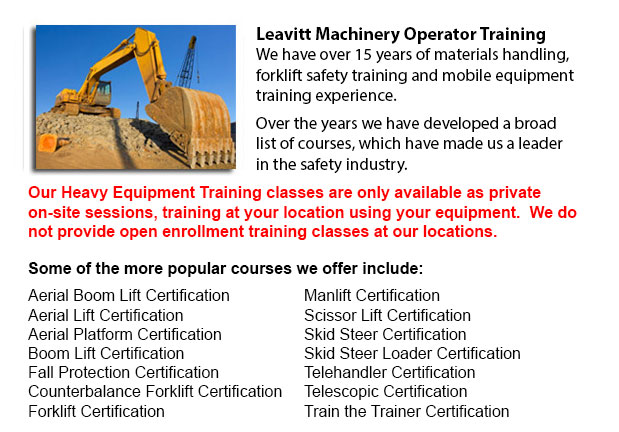
Heavy Equipment Operator Training Ottawa - Heavy equipment operator training facilities that provide good standards within the industry, offering field performance tasks and additional equipment training are highly sought after training features. Students are driven to apply to accredited schools which offer students top notch training utilizing first class equipment inside a great facility. Prospective students can check out the course curriculum and see that standards go beyond the mandatory quality standards provided through the process of accreditation. Numerous schools invite prospective students to tour the facility and obtain a firsthand experience at how the training is provided. This procedure allows students to ask instructors and current students regarding their experiences and the program.
Usually, programs are performed in a hands-on method utilizing full size machinery up to 80,000 lb class or 35 tons. This practicum provides students with the self-confidence they will need to be able to operate bigger sizes of machinery in various slope, soil, terrain and actual working site environments.
Heavy machinery consists of machinery which specializes in earth moving operations, and construction tasks. Heavy equipment generally comprises 5 equipment systems. These are power train, implement, structure, information and traction and control. Heavy equipment functions with the mechanical advantage of a basic machine. The ratio between the force exerted and between the input force applied is multiplied. The majority of machinery utilize hydraulic equipment as a main source of transmission.
The tires which heavy equipment requires are specialized for numerous construction uses. Like for example, numerous types of machinery have continuous tracts applicable, while others offer more severe service when greater mobility or speed is needed. To be able to choose the correct tires, it is essential to understand what type of application the equipment will be used for. This will make certain the correct tires are properly selected and would have the required life span for a specific environment.
Tire selection can have a impact on the overall impact on production and on unit costs. There are 3 common off road tires. These comprise work for slow moving earth moving equipment, load and carry for digging and transporting and transport for earthmoving equipment.
The 6 categories of off highway tires comprise LS log skidder, G grader, C compactor, ML mining and logging, E earthmover and L loader. The tread types on these tire categories will likewise differ. Several treads specialize on soft surface and rock, whereas other treads are designed for use on hard packed surface. On any construction project, tires are a huge expense and must be considered carefully to be able to prevent excessive damage or wear.
-
Telehandler Ticket Ottawa
Telehandler Ticket Ottawa - The telehandler or telescopic handler is a commonly utilized equipment in industrial and agricultural applications. This machine is the same in look to a forklift and also functions in a similar manner, though telehandlers... More -
Telehandler License Ottawa
Telehandler License Ottawa - The telehandler or telescopic handler is a frequently used machine in industrial and agricultural applications. This particular equipment is the same in appearance to a forklift and even functions in a similar way, althou... More -
Forklift Training Courses Ottawa
Forklift Training Courses Ottawa - Our forklift operator safety training has been tailored for illiteracy, thus cutting the training time in half. We provide forklift training certification, lift-truck operator driver safety training evaluation, and... More -
Boom Lift Certification Ottawa
Boom Lift Certification Ottawa - Making use of elevated work platforms allow for work and maintenance operations to be carried out at elevated work heights which were otherwise unreachable. Workers using scissor lifts and boom lifts can be educated i... More -
Aerial Platform Training Ottawa
Aerial Platform Training Ottawa - Aerial lifts might be used to accomplish certain different duties done in hard to reach aerial spaces. Many of the tasks associated with this style of lift include performing routine upkeep on structures with high ce... More -
Loader Operator Certification Ottawa
Loader Operator Certification Ottawa - Ways To Acquire A Loader Operator Certification - Loader Operator Certification is normally needed for personnel working within construction, warehouse or industrial setting to ensure the safe operation of forkl... More -
Aerial Lift / Boom Lift / Man Lift / Scissor Lift Training in Ottawa
Lift tables or also referred to as scissor hoists can raise both individuals and goods vertically. They are normally utilized in commercial, industrial and construction environments. Commonly, the use of a scissor lift truck is to lift and lower thin... More -
Skid Steer Loader Training in Ottawa
The engine powered skid-steer loader comprises a small and rigid frame, equipped together with lift arms which can connect to lots of industrial attachments and tools so as to perform a wide variety of labor saving jobs. Usually, skid-steer loaders a... More

Forklift Training Ottawa
Ottawa, Ontario
forklifttrainingottawa.com
Email Us
About Us


